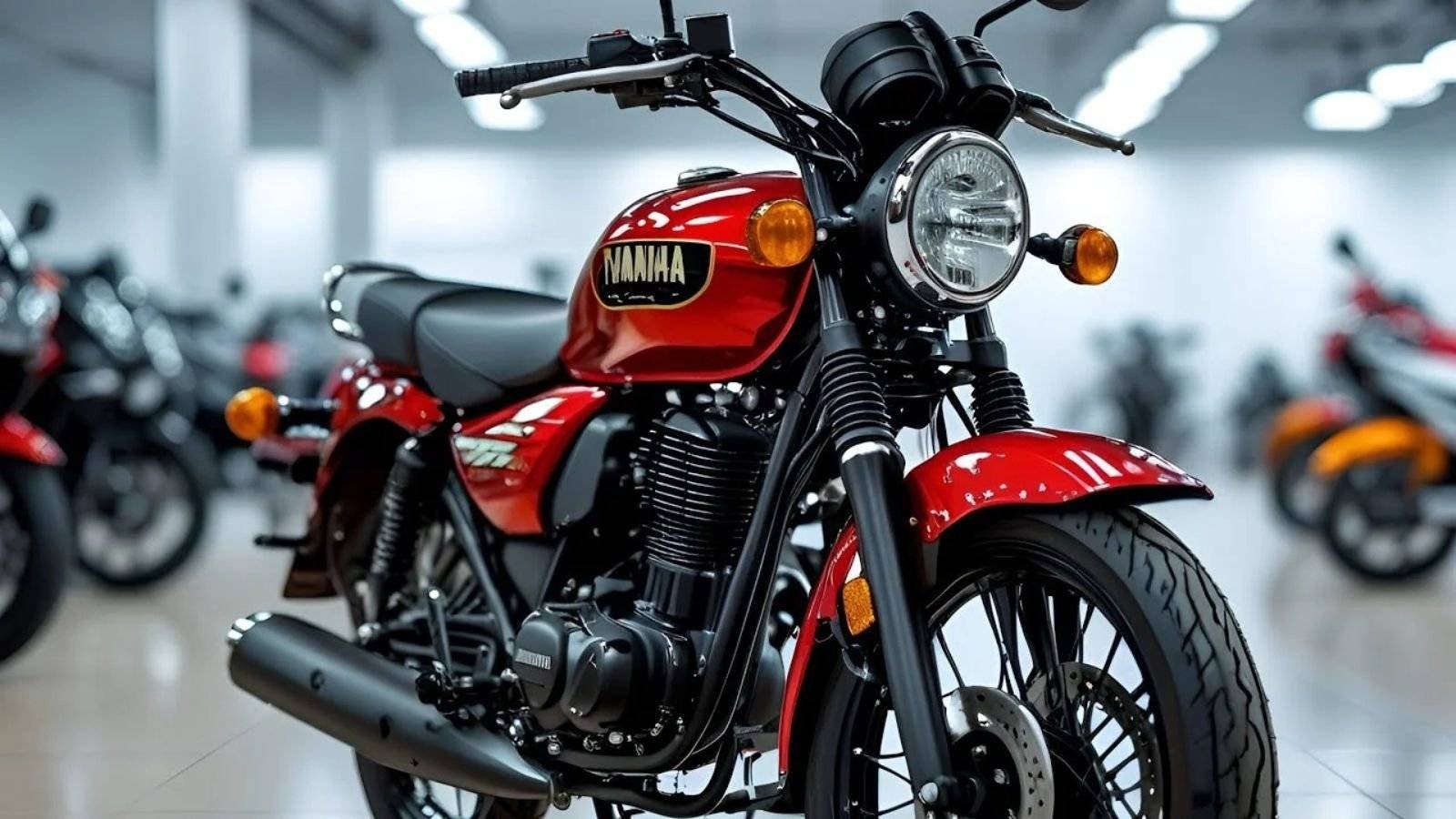The Yamaha RX100 is not just a motorcycle—it’s a legend that echoes through generations of Indian riders. For many who grew up in the 1980s and 1990s, this motorcycle was a dream on two wheels, an ultimate symbol of freedom, performance, and street cred. It was raw, aggressive, nimble, and above all, addictive. Today, even though it’s been decades since production stopped, the Yamaha RX100 still holds a fiercely loyal fanbase and continues to command high prices in the used bike market.
Let’s take a deep look into the history, performance, cult status, and current relevance of the one and only Yamaha RX100.
Yamaha RX100 – Key Highlights
| Feature | Details |
|---|---|
| Engine | 98cc, air-cooled, 2-stroke |
| Power | Approx. 11 HP |
| Gearbox | 4-speed manual |
| Weight | Around 100 kg |
| Top Speed | About 100 km/h |
| Brakes | Front and rear drum brakes |
| Fuel Efficiency | 25–30 km/l (depending on tuning) |
| Suspension | Telescopic forks (front), Swingarm (rear) |
| Production Years | 1985–1996 (Discontinued) |
| Legacy | Legendary status for performance & sound |

Why the Yamaha RX100 Became an Instant Hit
When the Yamaha RX100 hit Indian roads in 1985, it was unlike anything riders had experienced before. It came in as a replacement for the slower and heavier bikes of that era, offering something that was fresh, fast, and fiery. At a time when most bikes focused on practicality and mileage, the Yamaha RX100 brought raw performance to the streets.
What truly set the Yamaha RX100 apart was its peppy 98cc 2-stroke engine, which delivered an explosive 11 horsepower. That may not sound like much by today’s standards, but considering the bike weighed just around 100 kg, it had a power-to-weight ratio that made it fly. The acceleration was sharp, the throttle response was instant, and the sound—oh, that sound—was music to a biker’s ears. The Yamaha RX100 didn’t just move; it screamed down the road with authority.
Key Features That Made the Yamaha RX100 a Standout
The design of the Yamaha RX100 was minimal yet purposeful. It had a flat seat, a small and functional fuel tank with classic pinstriped graphics, and a no-nonsense round headlamp. It didn’t try to look fancy, but it had an unmistakable road presence.
Performance
At the heart of the Yamaha RX100 was its high-revving, air-cooled, two-stroke engine. Despite being just under 100cc, it churned out around 11 HP and could easily outperform many larger bikes of the time. Thanks to its lightweight frame, the bike offered lightning-quick acceleration and a top speed of around 100 km/h—exceptional for its class.
Handling and Braking
With telescopic forks up front and dual shock absorbers at the rear, the Yamaha RX 100 offered a surprisingly comfortable ride even on less-than-perfect Indian roads. It was easy to flick around corners and had precise steering, which made it a favorite among street racers. The drum brakes on both ends, though basic, were sufficient due to the bike’s light weight.
Gearbox and Clutch
The 4-speed gearbox on the Yamaha RX100 was incredibly smooth. Riders loved the clicky gearshifts and the light clutch, which made the whole riding experience effortless and fun. Whether you were crawling through city traffic or zooming down open roads, the Yamaha RX100 handled it with grace.
The Emotional Connect: What Made the Yamaha RX100 a Cult Classic?
The emotional bond that Indian bikers have with the RX100 is unmatched. This wasn’t just a bike—it was a part of their youth. It represented rebellion, freedom, and a passion for speed. It became a style statement, a head-turner, and above all, a reliable companion for everyday rides and weekend fun.
Over the years, the Yamaha RX 100 gained a massive cult following. Enthusiasts across the country began modifying it for drag races and street racing. Tuned exhausts, custom paint jobs, and performance upgrades became common, and the bike started showing up at every motorsport event in the country.
Even today, if you see a well-restored Yamaha RX 100 on the road, chances are it’ll grab your attention. That distinct exhaust note is instantly recognizable and still gives goosebumps to anyone who grew up in the RX era.
Why Was the Yamaha RX100 Discontinued?
Unfortunately, the very engine that made the Yamaha RX100 so thrilling was also its downfall. With tightening emission norms in India during the mid-90s, two-stroke engines became increasingly unsustainable. They emitted more pollutants compared to four-stroke engines, and Yamaha had no choice but to pull the plug on this legend in 1996.
The company tried to replace it with models like the RXG, RX135, and RXZ, but none of them could match the purity, performance, and popularity of the original Yamaha RX100.
Is the Yamaha RX 100 Still Available Today?
Officially, no. Yamaha stopped manufacturing the RX100 decades ago. But thanks to its iconic status, you can still find second-hand models in the used bike market. Collectors, enthusiasts, and mechanics often restore old RX100s to showroom condition. A well-maintained or properly restored Yamaha RX100 can fetch a price of ₹50,000 to ₹1.5 lakh, depending on its originality and condition.
Spare parts are still available, albeit with some effort. Many aftermarket manufacturers produce compatible parts, and a strong community of Yamaha RX100 enthusiasts ensures that knowledge and resources are shared widely online.
Can You Use a Yamaha RX100 for Daily Commuting Today?
Technically, yes—you can. If the bike is in good condition and well-maintained, the Yamaha RX100 can still be a reliable ride. However, you should consider a few factors:
- Fuel Efficiency: While fun to ride, it’s not the most fuel-efficient option compared to modern 100cc four-stroke bikes.
- Spare Parts: Some parts may be hard to source or expensive.
- Pollution Norms: In some cities, older two-stroke bikes may not be road legal due to environmental regulations.
Still, for enthusiasts, the joy of riding a Yamaha RX100 outweighs these drawbacks.
What Made the RX100 Faster Than Its Rivals?
The biggest reason for the superior performance of the Yamaha RX100 was its two-stroke engine design. Unlike four-stroke engines, which have a more gradual power curve, two-stroke motors deliver power in a sharp burst, especially in the mid-to-high rev range.
The bike’s light frame, excellent power-to-weight ratio, and aggressive gear ratios gave it the edge in drag races and street runs. It was simple, powerful, and quick—three qualities that made the Yamaha RX100 the king of the streets.
FAQs
Q. Why is the Yamaha RX100 still so loved today?
A. Because it offers pure, raw riding pleasure that’s hard to find in today’s machines. It’s a piece of motorcycling history.
Q. Are Yamaha RX100 bikes road legal in 2025?
A. It depends on your location. Some Indian cities have banned older two-stroke bikes due to emission laws. Check your RTO for specifics.
Q. Can I still buy a brand-new Yamaha RX100?
A. No. Yamaha stopped production in 1996. Only used or restored bikes are available in the market.
Q. Will Yamaha ever relaunch the R X100?
A. Yamaha India has hinted at bringing back the RX100 badge, possibly with a four-stroke engine. But nothing has been confirmed yet.
Conclusion: A Legend That Lives On
The Yamaha RX100 was never just about specs on paper—it was about how it made you feel when you twisted the throttle. It was light, fast, and responsive, with a sound that gave you an adrenaline rush. Even today, decades after it went out of production, the Yamaha RX100 continues to be the most talked-about motorcycle in India’s two-wheeler legacy.
Whether you’re a collector, a nostalgic rider, or someone who just loves iconic machines, the Yamaha RX100 deserves a place in your garage—or at least in your heart. Because some machines aren’t just built with metal and bolts—they’re built with emotion, and the Yamaha RX100 is the perfect example of that.
Some Important Link
| Telegram Group | Click Here |
| WhatsApp Group | Click Here |
| Home Page | Click Here |















